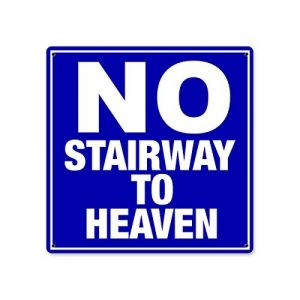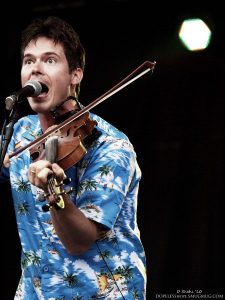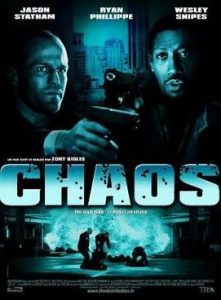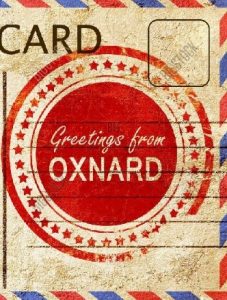by Stephen Scobie
Previously in this series
“Murder Most Foul”
As has been widely acknowledged, the title comes from Hamlet: Act One Scene Five. Hamlet confronts his father’s Ghost. The Ghost enjoins him: “Revenge my foul and most unnatural murder.” Shocked, Hamlet exclaims “Murder!” and the Ghost drives the point home: “Murder most foul, as in the best it is, /But this most foul, strange and unnatural.” “Foul” – three times in three lines. Not just murder, but something unnatural. What the Ghost is hinting at, but even he dare not say it, is incest. If Gertrude became Claudius’ mistress when still married to his brother, then she is guilty of incest – foul and unnatural.
Yet the Ghost goes on to admonish Hamlet to do nothing against his mother – which puts him in an impossible position. He cannot make any public accusation against Claudius, since that would implicate Gertrude too, So the only way Hamlet can revenge his father is by acting in secret, by pursuing his revenge privately. And that is the one thing that Hamlet cannot bring himself to do. Hence his famous delay, his inability to act.
Hamlet’s tragedy is that fate places him in the one situation in which his finest qualities conspire against him. He knows that an essential part of civilisation is that the state assume a monopoly of violence: that “blood feuds” are settled by law, not by private violence. Yet the Ghost’s instructions are pushing him back to the role of Revenger, which he cannot assume. And this is the sticking point that Dylan comes back to in RRW, again and again, in all the references to private violence, which he (or his narrator) appears to indulge with such relish.
‘Twas a dark day in Dallas
Personal disclosure required. I don’t see how you can react to this song without taking a position on all the conspiracy theories around Kennedy’s assassination. On the one hand, I have never been a big fan of conspiracy theories, whose promoters decidedly tend towards being nuts. On the other hand, I have never been fully convinced by Oswald-as-lone-assassin. Dylan (or the speaker of this song) is clearly convinced that Kennedy died because of some conspiracy, and I am prepared to accept that as the narrative basis of the song. But I will not go through “Murder Most Foul” in as much source-hunting detail as I have done with the nine previous songs. If you want footnotes on “Dealey Plaza” or “Zapruder,” there are plenty of places you can find them. “Conspiracy” includes “piracy.”
Similarly, I am not going to try to comment on every reference or dropped name in this song. As Eyolf Ostrem says, in an excellent on-line review,
“I see them as a whole …where a seemingly endless row of characters pass before our eyes and ears in a procession. One by one they step into the light before they recede into the multitude again, but the remaining impression is that of the procession itself, not of the individual participant.”
So I will highlight a few references, but make no attempt at completeness. However, looking at the vast array of works listed in the second half of this song, and asking who gets in and who gets left out, there are a few general comments I want to make.
The immediate critical consensus was that the works listed in the second half of the song were in some way a cure, a counterbalance to the deeply pessimistic view of American culture brought on by the Kennedy assassination. So, to be blunt, who gets in and who gets left out? And let’s focus first on who gets left out.
The list is confined to music and movies. No novelists. No poets. No painters.
The majority of songs referred to come from before 1963: in other words, they are songs which JFK himself could plausibly have heard and enjoyed. There are a few exceptions: The Who, The Eagles, Fleetwood Mac, and of course Wolfman Jack. I find it hard to explain these exceptions, but the general principle holds. If the musical tradition is to be advanced as a redemption of our current cultural malaise, then it is a tradition which more or less predated Kennedy’s death.
And there is no mention at all of folk/protest music of the 1960s. A passing mention of Tom Dooley; possibly Jean Redpath. Woody Guthrie is not mentioned by name, but by the title of one of his songs. No Pete Seeger. No Joan Baez. No “We Shall Overcome.”
Wait a minute, boys
This is a common phrase, and needs no “source,” but a surprising number of Dylan followers have jumped to its use in “Hurricane” (1975).
We’ve already got somebody here to take your place
The most direct statement in the song of conspiracy theories implicating LBJ.
Wolfman
Wolfman Jack was the most famous radio DJ of the early 70s, culminating in his semi-fictitious portrait of himself in George Lucas’s American Graffiti (1973).
Hush, little children… The Beatles are coming, they’re gonna hold your hand
“I Wanna Hold Your Hand” was one of the first Beatles mega-hits. Dylan casts them in an innocuous role: “hold your hand” like a parent rather than a boyfriend. Again, unlike “them British bad boys, the Rolling Stones” (though I do remember some of my more subversive fellow students singing it as “I wanna hold your gland”).
Ferry ‘cross the Mersey and go for the throat
Another innocuous Liverpool group, Gerry and the Pacemakers, immediately followed by another stab of vengeance.
Woodstock… Altamont….
Emblematic moments, high and low, for the 1967 Summer of Love. Dylan actually attended neither.
Good times….
It sure takes a lot of gall
to rhyme
Let the good times roll
with
Grassy knoll
Living in a nightmare on Elm Street
Elm Street, Dallas, is the actual location of Kennedy’s assassination. A white cross in the roadway marks the exact spot at which he was hit. In 1984, Nightmare on Elms Street was the first of a series of highly successful horror movies. In the next line, Dylan puns on the name in “Deep Elem Blues,” a traditional American song, widely recorded, by everyone from The Grateful Dead to Dylan himself (in 1962),
Frankly, Miss Scarlett, I don’t give a damn
Last line of Gone with the Wind (1939). Actually, in the movie Gable says “my dear,” not “Scarlett”; he also, to placate censors, laid the stress on “give,” not “damn.”
That magic bullet of yours has gone to my head
I’m just a patsy, like Patsy Cline….
Got blood in my eye….
OK, now the references are coming thick and fast, it’s hard to keep up with them. The “magic bullet” is the description for one of the shots that killed Kennedy; for conspiracy theorists, it is “magic” because, in order to inflict the wounds in a way consistent with the demands of the single assassin scenario, it would have had to behave in ways that, forensically, seem highly unlikely. Dylan then offers a black joke on the double meaning of “gone to my head,” followed by an even nastier twist on the name of country singer Patsy Cline. But it was Oswald, not Kennedy, who said, “I’m just a patsy.” So who is the singer here? “my head” is Kennedy; but “patsy” is Oswald. Then we are back to “blood in my eye,” which sure sounds like Kennedy, except that it’s also the title of a 1974 song by the Mississippi Sheiks, memorably covered, in 1993, by Bob Dylan.
I said the soul of a nation been torn away
And it’s beginning to go into a slow decay
Whatever one’s views on the conspiracy theory of the Kennedy assassination, most people will agree that it was a shattering moment, and that nothing in American political or cultural life has been the same since. In recent years, Bob Dylan’s world view has perceptibly darkened. He sees his nation in a “slow decay”; he sees us living in a “World gone wrong.” Maybe all that’s left is the music.
Wolfman Jack, he’s speaking in tongues
He’s going on and on at the top of his lungs
Play me a song, Mister Wolfman Jack
Play it to me in my long Cadillac
Way back at the beginning, third verse of the first song, Dylan had pictured himself in a “Red Cadillac”; earlier in this song, it’s a “long black” Cadillac; historically, it was navy blue, repainted black later. It was, with deepest irony, a Lincoln. It seems to be JFK who is calling in requests as the Wolfman goes on and on. The list has now more or less consumed the song.
If you want to remember, you better write down the names.
And they come, thick and fast, going on and on. Oscar Peterson, Stan Getz, Charlie Parker, Jelly Roll Morton, Bud Powell…. You see what Ostrem means by “the procession itself, not the individual participant.”
“Please Don’t Let Me Be Misunderstood”
The classic version is by Nina Simone, but there is also a fine performance by Eric Burdon and the Animals, who had stunned Dylan with their version of “House of the Rising Sun.”
Far away down Gower Avenue
Personal confession: for many years, I misheard this as “your avenue,” and even built whole interpretations on that mishearing. Although Dylan here associates the phrase with The Eagles and Carl Wilson, it is actually by Warren Zevon, during the inspired fade-out of “Desperadoes under the Eaves.” The omission of Zevon’s name here is all the more surprising because Dylan was a great admirer of Zevon, playing several of his songs in concert after his death.
Take me back to Tulsa, to the scene of the crime
The most obvious “crime” associated with Tulsa is the infamous race riot in 1921, where as many as 300 Blacks were killed by white mobs. More recently, it has become the home for major archives and study centers devoted to Woody Guthrie and Bob Dylan. Of course, Dylan may also have been thinking about Gene Pitney’s 1963 hit “24 Hours from Tulsa.”
Birdman of Alcatraz
Probably best known now by the 1962 film, starring Burt Lancaster and directed by John Frankenheimer.
Play Buster Keaton, play Harold Lloyd
Two of the biggest silent screen comedians – but curiously no mention of the biggest of them all, with whom the early Dylan was often compared: Charlie Chaplin.
Play “Pretty Boy Floyd”
Epitome of the American “good outlaw,” the Robin Hood figure who steals from the rich to give to the poor. Immortalised in song by Woody Guthrie. The 1988 tribute album A Vision Shared features a fine performance of “Pretty Boy Floyd” by Bob Dylan.
Play “Down in the boondocks” for Terry Malloy
“Down in the boondocks” is the first in a series of “Down in… “ locations for Key West in the previous song. It’s the title of a 1965 song, written by Joe South, sung by Billy Joe Royal, and containing, so one web site informs me, a “sampling” from Gene Pitney’s “24 Hours from Tulsa”! Terry Malloy is the name of the character played by Marlon Brando in On the Waterfront, directed by Elia Kazan (1954). At the end of the film, he gets spectacularly beaten up, which was somewhat of a Brando specialty. It is Brando’s second appearance on RRW, after “My Own Version of You.” Again, the choice is a bit odd: Keaton, but not Chaplin; Brando, but not James Dean.
Merchant of Venice…
Play “Stella by Starlight” for Lady Macbeth
Shakespeare again, bookending his earlier appearances. I’m afraid I don’t see any special relevance in Merchant of Venice, but Lady Macbeth is more promising. The song “Stella by Starlight,” by Victor Young was written for a 1944 haunted-house ghost movie called The Uninvited. Lady Macbeth has to deal with ghosts, uninvited guests at a banquet, and, of course, the assassination of a political leader.
Was a hard act to follow, second to none
“Second to none” reappears from “False Prophet,” where Dylan ascribes it to himself, his own status. Here, though, it pictures the assassination itself as a theatrical “act,” which will be hard to follow – except, of course, that the JFK killing was followed, in that fatal series of initials: JFK, RFK, MLK. And the sinister conspirators have just assured the dying President that we’ll get them as well.
Memphis in June
1945 song by Hoagy Carmichael. Previously quoted by Dylan in “Tight Connection to My Heart” (1985).
Play Moonlight Sonata in F Sharp
In the first song on the album, Dylan did promise to play Beethoven Sonatas. This one would be especially challenging, since it’s in C Minor.
“Dumbarton’s Drums”
A traditional Scottish folk song, and indeed the closest this list comes to 1960s “folk.” Dylan may have learned it from Jean Redpath, whose exquisite version can be found on You Tube. Redpath was a young Scottish singer who hung around Greenwich Village in 1961-62. Dylan biographer Ian Bell tactfully observes that the two of them “briefly become more than friends.”
But what are Dumbarton’s drums doing here, wedged in between two references to the American Civil War?
Play “Marching through Georgia”….
Play “The Blood Stained Banner”….
As if carefully balancing sides, Dylan gives us one image from the North and one from the South. “Marching through Georgia” celebrates Sherman’s decisive victory over the Confederate army – the ultimate triumph of Old Fuss and Feathers, as celebrated in “Mother of Muses.” ”The Blood Stained Banner” is an actual flag, the last of several designs used by the Confederate States of America. It was the subject of a 1990 song unabashedly celebrating the Confederate cause, written by Phil Driscoll. If you follow that name on You Tube, you will discover a rather splendid 8-minute version of Dylan’s “Serve Somebody.”
Dylan has long been interested in the Civil War, describing it in Chronicles as the “all-embracing template behind everything that I would write.” So it is only fitting that these two references should be the final context in which he places the life, and death, of an American President.
…. Play “Murder Most Foul”
So the last song on the list, the last song that Dylan asks the Wolfman to play for the dying President, is the song we have just been listening to, for almost 17 minutes, on its separate CD. “Murder Most Foul.” No wonder records, tapes, and discs have always been circular. Repetition is their essence, going round and coming round. Time to start again: “Today and tomorrow and yesterday too.” Where will the circle take us this time?
============
Index to all the Rough and Rowdy Ways articles
Untold Dylan: who we are what we do
Untold Dylan is written by people who want to write for Untold Dylan. It is simply a forum for those interested in the work of the most famous, influential and recognised popular musician and poet of our era, to read about, listen to and express their thoughts on, his lyrics and music.
We welcome articles, contributions and ideas from all our readers. Sadly no one gets paid, but if you are published here, your work will be read by a fairly large number of people across the world, ranging from fans to academics. If you have an idea, or a finished piece send it as a Word file to Tony@schools.co.uk with a note saying that it is for publication on Untold Dylan.
We also have a very lively discussion group “Untold Dylan” on Facebook with around 7000 active members. Just type the phrase “Untold Dylan” in, on your Facebook page or follow this link
You’ll find some notes about our latest posts arranged by themes and subjects on the home page of this site. You can also see details of our main sections on this site at the top of this page under the picture. Not every index is complete but I do my best. Tony Attwood






